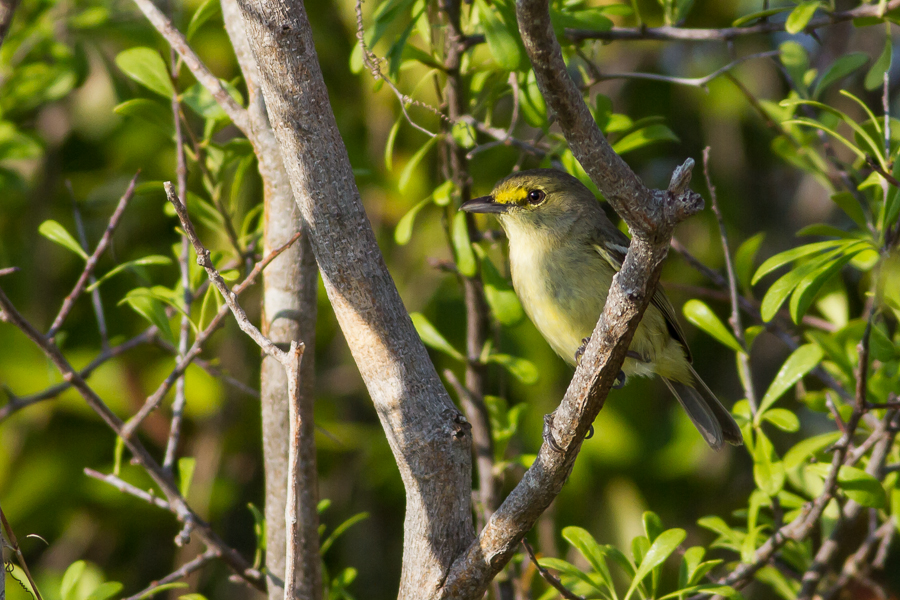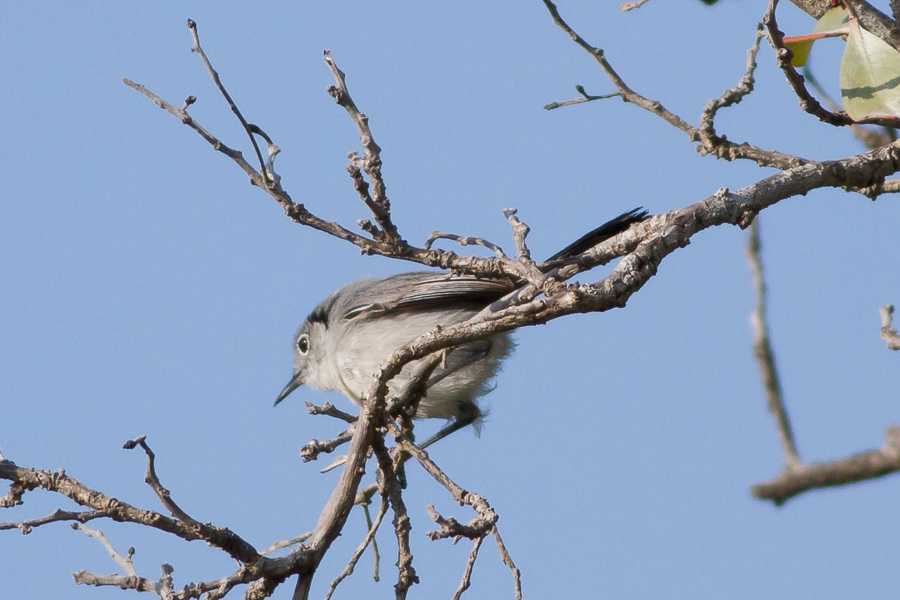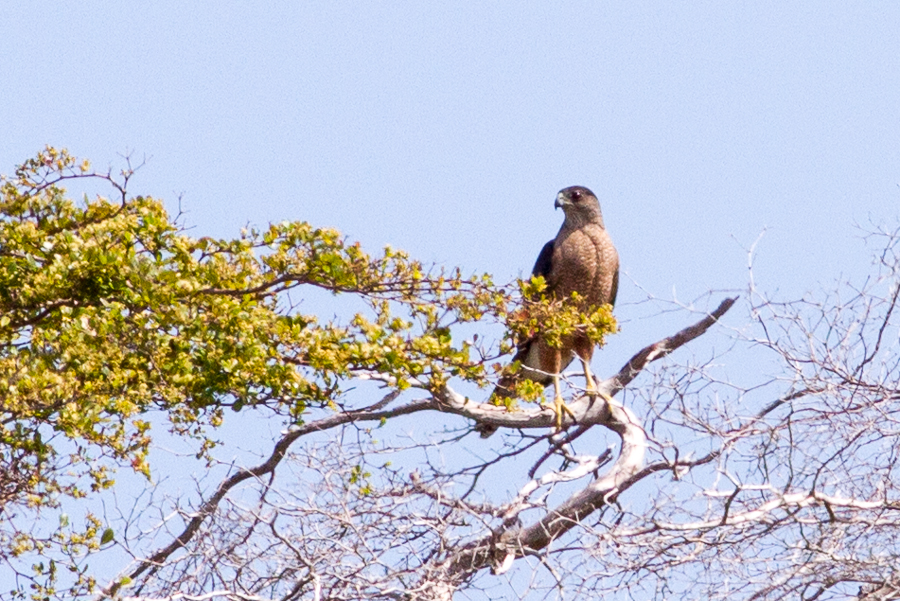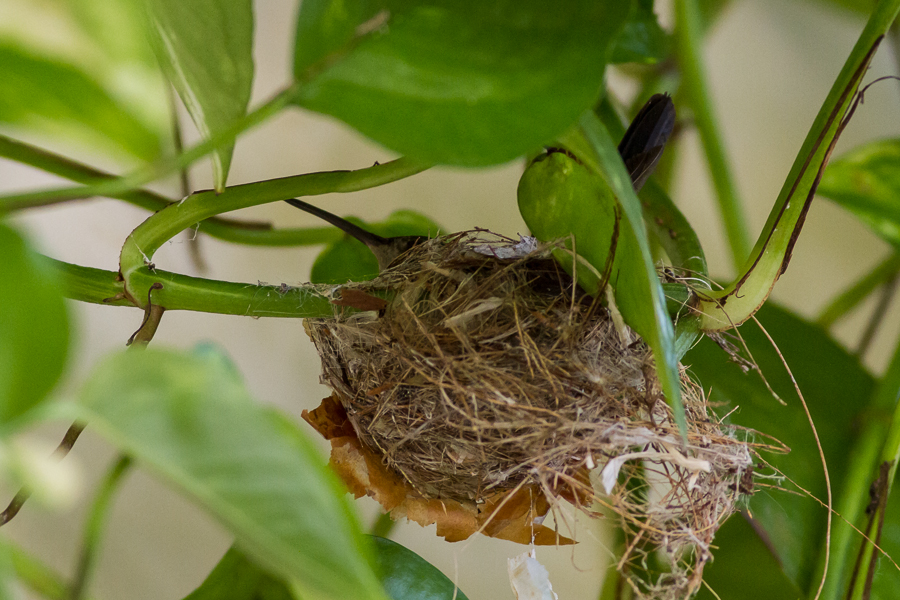Cuba Day 10 #840-842 on Cayo Paradon Grande
Last full day of birding today. The hotel buffet doesn’t open until 7:30 AM and we’re leaving at 7:00, so they provide a few sandwiches and coffee. We start with a 40 minute or so drive to Cayo Paradon Grande. Almost as soon as we get off the bus, we pick up #840 Thick-billed Vireo. My field guide says it isn’t supposed to be here at this time of year, but our local guides know better and these photos prove it:

Not a few meters later, we add #841 Cuban Gnatcatcher, which is supposed to be here:

We walk down the lighthouse and add a few species including Merlin, Willet, Gray Catbird, and Yellow Warbler. There’s a small military installation down here, and we’re warned to keep our scopes, binoculars, and cameras pointed in one direction only. Fortunately no tantalizingly good birds show up over the base. :-)
On the drive back up the road, we stop at the bridge connecting Cayo Paradon Grande to Cayo Romano. From there we spot a vagrant Lesser Black-backed Gull, as well as several Magnificent Frigatebirds, Ruddy Turnstone, and Double-crested and Neotropic Cormorants.
Then, not a mile further down the road, the bus suddenly pulls over. We get out, not sure what to expect, when Hiram points out the rare and endemic Gundlach’s Hawk, #842, perched in a tree:

This endangered species is perhaps the single rarest bird we see all trip, and one we missed earlier at the FINCA. Perhaps only a few hundred remain.
Then it’s back to the hotel for a buffet lunch and a little rest. The buffet seems to be quite familiar. It doesn’t change a lot from one meal to the next.
We leave again about 2:30 PM, but don’t go far. First stop are some retention ponds–it wouldn’t be a birding trip without at least one kind of sewage treatment plant–near the Hotel Tryp Cayo Coco resort. This adds several duck and shorebird species to our list including Blue-winged Teal.
Then we head back, first stopping at the Hotel Tryp Cayo Coco where we a nesting Northern Flicker has been staked out:

Rare for Cuba, this is not uncommon back home in Brooklyn, but it is a new bird for the trip and the group’s Cuba list.
Finally we drive to the Hotel Melia Cayo Coco, next door to our hotel where some Cuban Emeralds have build a nest in the ornamental foliage directly above the checkin desk!

We also bird the grounds. This hotel is one star better than ours, and also much more environmentally friendly. Unlike most of the hotels on the cay, they have landscaped with native plants, and retained as much of the native vegetation as possible; and its worth is proved by the number of nesting, native, and migrating species we find here including #843, Cuban Vireo. I heard this earlier in the trip but this is the first time I’ve seen one. I’m glad I didn’t miss it. I never did get a photo of it though.
The bus seems to be running out of diesel, so we head back to the hotel a little early, around 4:00. However the same British birder who tipped us off to the nesting Hummingbirds at the checkin desk, told us there were Piping Plovers down the beach past a beer hut. I’m not wiped out yet, so I grab my scope and camera and head down there. I run into trip leader John on the way, which is fortunate because soon my Carryready strap completely breaks, dropping my camera into the sand. No serious damage done, but now I have to carry the camera in my hand, so John volunteers to take the scope. Together we eventually find three or so Piping Plovers, mixed in with many Semipalmated Plovers, Ruddy Turnstones, and Sanderlings. The Piping Plovers and Sanderlings are new for the trip.
Eventually Robert and Janet catch up with us, and verify the Piping Plovers. They also mention a Short-billed Dowitcher they spotted that we missed not far back. On the way home we spot this too for the last tick of the trip. Tomorrow it’s off to the airport and a flight back to the states.
